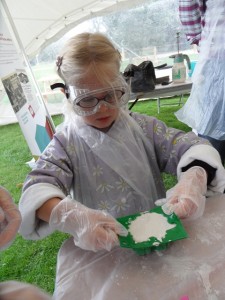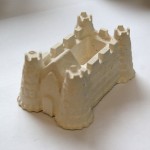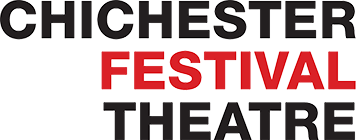
Concrete is the single most widely used material in the world and was fundamental to the construction of the Festival Theatre. To explore and share the significance of this material to the Theatre, we ran our very own concrete- making workshop earlier this year.
Prior to starting as the first Heritage Trainee of Pass It On earlier this year, I had never really thought all that much about concrete. I was vaguely aware of concrete constructions nearby; indeed the infamous Tricorn Centre loomed large as a landmark of days out in Portsmouth until its demolition in 2004. Nevertheless, voted by Radio 4 listeners as the most hated building in Britain and described by Prince Charles as “a mildewed lump of elephant droppings”, this didn’t do much to raise my awareness or appreciation of concrete as a building material.
Chichester Festival Theatre is, of course, another famed local concrete construction, but one which has gone much further to capture the public’s hearts and minds. Its strong geometric construction, using bush-hammered concrete, set it apart as a champion of brutalism, a 1960’s building style which drew its name from the French béton brut, or “raw concrete”. Certainly the building couldn’t have been constructed in any other material.

Love it or hate it, concrete is therefore essential to the story of Chichester Festival Theatre and so this year during our Heritage Open Day on Saturday 14 September, Oaklands Park became temporary home to concrete-making workshops.
Under the tuition of concrete expert Andy Coxall, workshop attendees learnt a little about the history and how to mix concrete to the desired consistency. We all got to create our own unique mix using cement, a choice of sands to form the aggregate, and water, before pouring our mixture into silicon moulds in many different shapes. Miniature woodland creatures, stars, cupcakes and fairy tale castles were all produced!
Everyone left the moulds to dry overnight and, on returning on Monday

morning, office staff had the fun task of peeling away the moulds to reveal the objects beneath. I think it’s safe to say we were all amazed at how fine and detailed they were, as well as the variety of finishes and textures evident in the different mixes. Some were as smooth and shiny as marble, whilst others were rough and gritty much like the texture of the Festival Theatre. When people came to collect their creations, they were all surprised by the results too.
It was a fascinating opportunity to learn about something I’d never considered in any depth before. Certainly the tiny concrete turtle on my desk will ensure I never look at concrete in quite the same way again!


